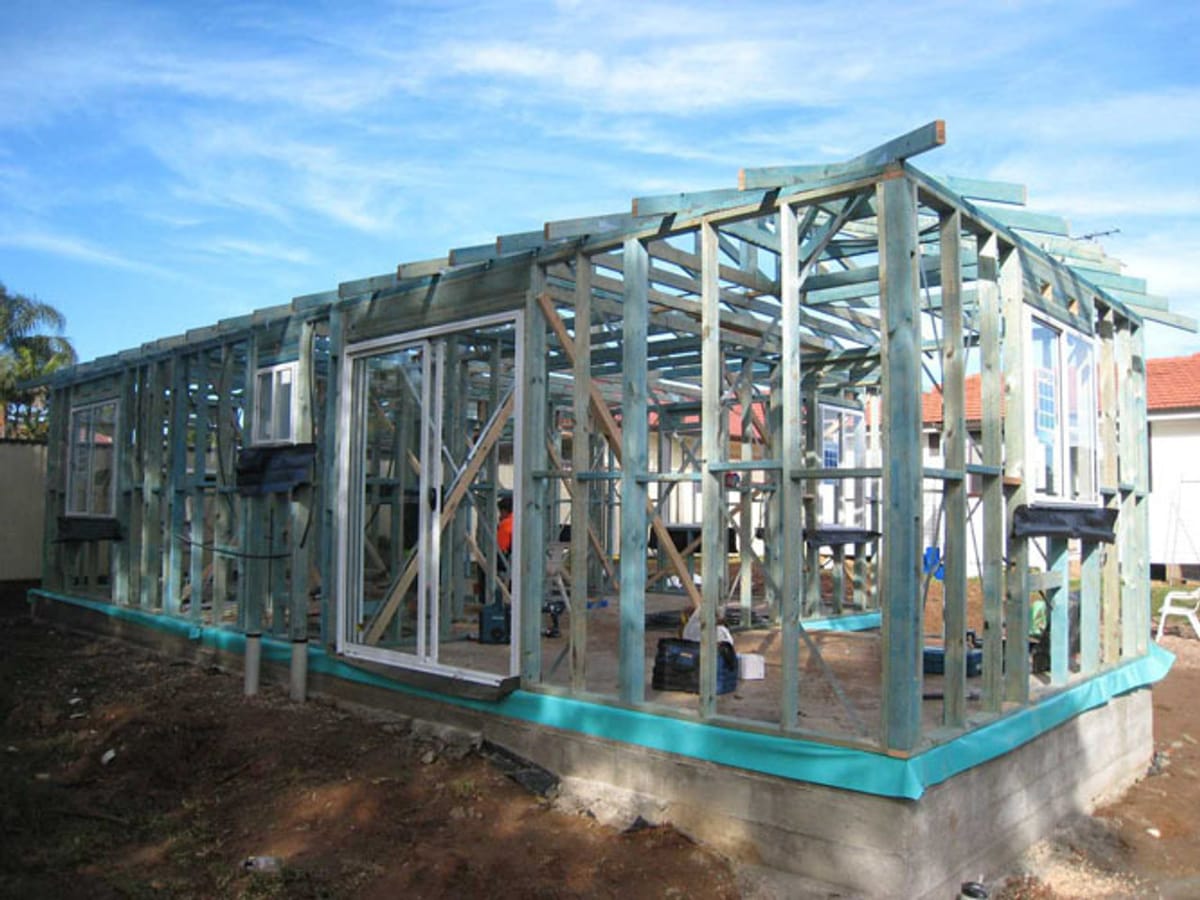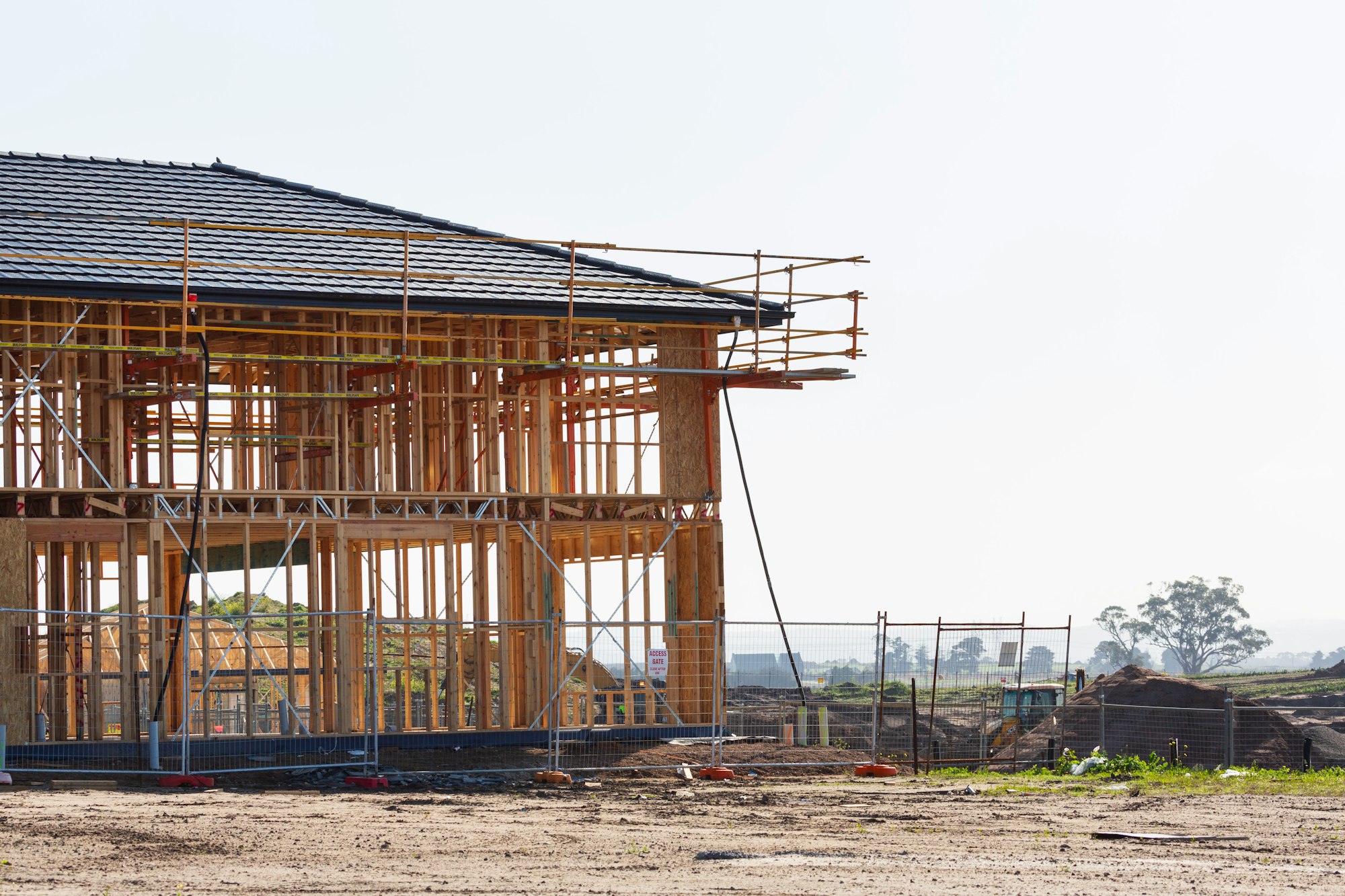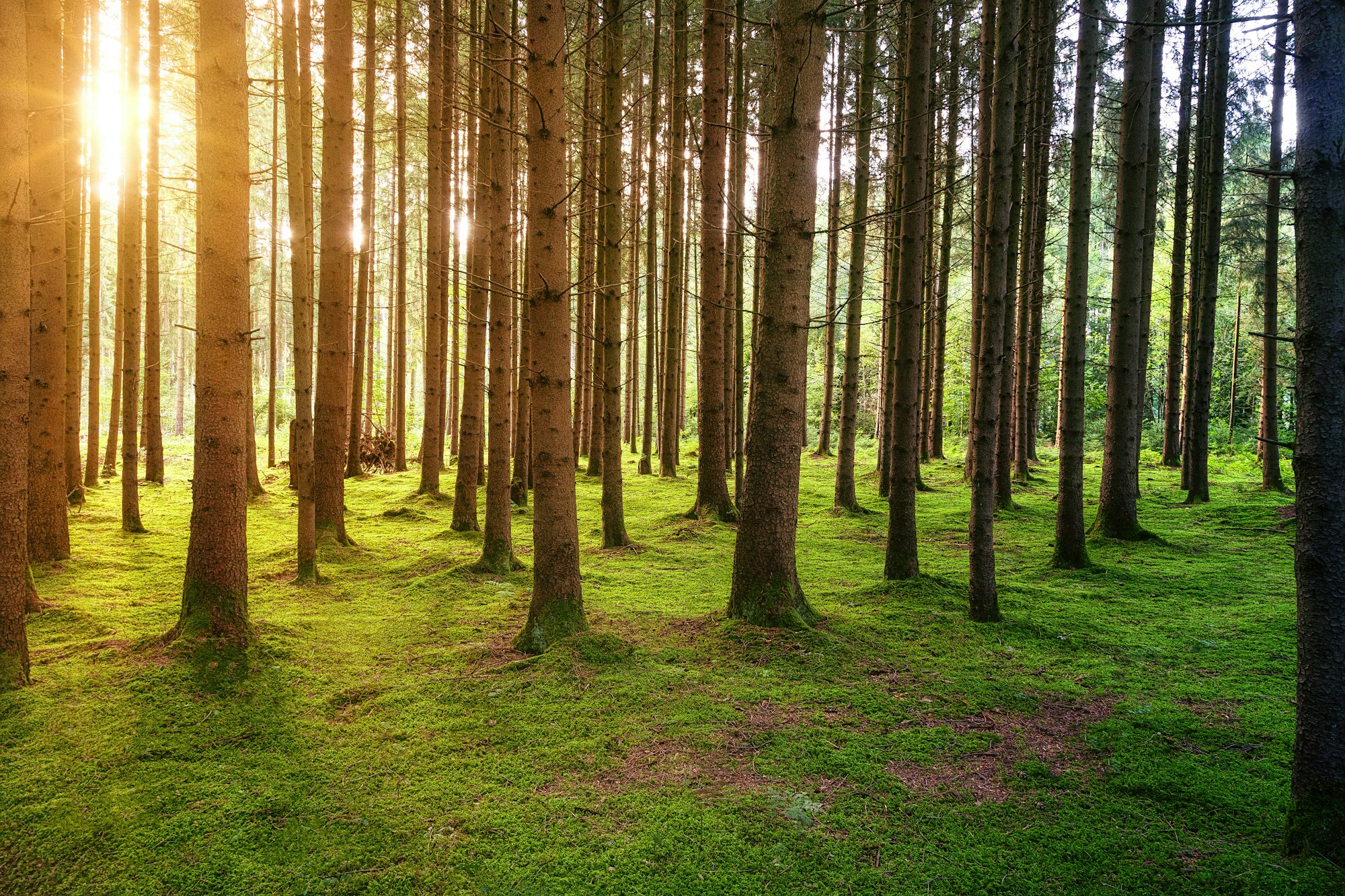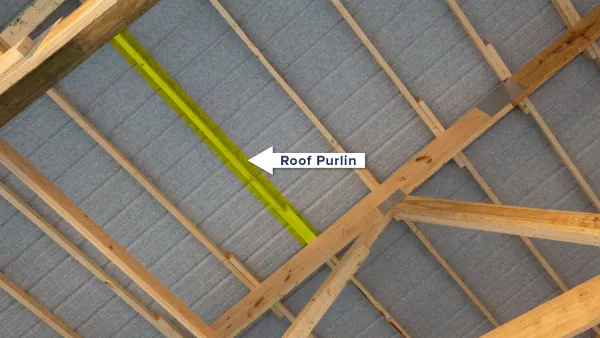Introduction
When it comes to building your new home, the materials you choose play an important role in determining not just the look and feel of your home, but also its durability, sustainability, and even cost-effectiveness. One of the most critical decisions in residential construction revolves around selecting the right type of wood for the frame construction. This choice influences everything from the structural integrity of the home to its resistance to environmental factors like insect damage and rot.
In this article, we'll guide you through the various options available for your home construction project, from traditional woods like Douglas fir and pine wood to Australian hardwoods and cutting-edge engineered timber products. We'll also dive into sheet timber products such as plywood and MDF, shedding light on their best uses in construction. Whether you're laying the foundation for a cozy cabin or erecting the frame for a sprawling estate, understanding the properties, applications, and benefits of different wood types will ensure your next project stands the test of time.
Let's embark on this journey to uncover the ideal wood materials for your construction projects, armed with knowledge about hardwood trees, softwood trees, and the innovations in wood products that the construction industry offers today.
Main Types of Wood in Construction
In timber framed construction, the choice between hardwood and softwood is fundamental. This decision is influenced by the wood's density, durability, and how well it stands up to factors like rot and insects. But what exactly distinguishes hardwood from softwood, and how do these differences impact their use in construction projects?
Hardwood Trees and Softwood Trees
Hardwood trees are deciduous, leaf-bearing trees. They grow slowly, which makes their wood denser and generally harder than softwoods. This category includes species like oak wood, maple wood, and walnut wood, which are renowned for their strength and are often used in areas requiring durability, such as hardwood flooring and high-end furniture. Australian hardwoods, like Jarrah, Spotted Gum, and Blackbutt, offer unique colors and grain patterns that make them a great choice for both structural applications and aesthetic considerations.
On the other hand, softwood trees are typically coniferous, cone-bearing, and tend to grow faster than hardwoods, making them less dense. This category includes types like Douglas fir, pine wood, and cedar wood. Softwoods are a popular choice for timber framing and other structural components of home construction due to their lighter weight, ease of use with hand tools, and general cost-effectiveness. They are ideal for a wide range of building projects, from the structural framework to interior trim and exterior walls.
Engineered Wood Products
The construction industry has also seen the rise of engineered wood products, which combine wood fibers, strands, or veneers with adhesives to create materials that are strong, durable, and versatile. Laminated Veneer Lumber (LVL) and Glued Laminated Timber (GLT) are excellent examples of engineered products used in residential construction for beams, joists, and even entire timber frames. These products offer the natural beauty of wood while enhancing strength and reducing environmental impact, making them an ideal choice for sustainable building construction projects.
Read our article titled: “Are Your Composite Decking Boards Up to Code” HERE
Sheet Timber Products
Sheet timber products, such as plywood, OSB, MDF, and particle boards, have become staples in the construction industry. Plywood and OSB are especially valued for their strength and resilience, making them suitable for use in everything from exterior walls to roofing substrates. MDF and particle boards, while not suitable for structural use, are widely used for interior applications like cabinetry and furniture due to their smooth surface and uniform density.
By understanding the main types of wood and wood products available, builders and homeowners can make informed decisions that balance aesthetic appeal, functionality, durability, and cost.
Key Wood Types Used in Home Frame Construction
Douglas Fir
A titan in the world of construction woods, Douglas fir, hailing from the vast forests of North America, stands as a testament to the perfect blend of durability and strength needed for construction projects. Its preference in the construction industry, especially for timber framing and structural wood components, isn't just due to tradition. This wood type brings to the table an impressive resistance to insect damage and a natural ability to withstand the test of time, making it an excellent choice for residential construction. The wood’s straight grain pattern not only contributes to its structural integrity but also offers a visual appeal, making it suitable for exposed beams and other aesthetic applications.
Pine Wood
Pine is another softwood that's widely utilized in building construction projects. Varieties like Southern Yellow Pine and Radiata Pine are especially noteworthy for their application in residential construction due to their affordability and versatility. Pine wood's good choice extends from structural elements, like framing, to aesthetic features such as interior trim and window frames. Its ability to be easily stained or painted makes pine a great choice for decorative elements. Additionally, its natural resistance to rot and pests, particularly with treatments, allows for durable construction without breaking the bank.
Oak Wood
When it comes to hardwood flooring or durable furniture, oak wood often stands as a popular hardwood choice. The distinction between red oak, known for its reddish-brown hue, and white oak, prized for its rot resistance and lighter color, provides options for various construction needs. Oak's dense structure and beautiful grain make it ideal for structural applications and high-end finishes alike. Its use isn't limited to flooring; oak wood finds its way into building durable, aesthetically pleasing furniture, and even in the creation of outdoor furniture, thanks to its natural durability.
Maple Wood
Maple wood, encompassing varieties such as hard maple and soft maple, offers builders and designers a hardy material known for its light, uniform texture and durability. Hard maple, or sugar maple, is often the go-to for areas of high traffic or where strength is paramount, such as in hardwood flooring or heavy-duty furniture. Soft maple, while not as dense, still provides a solid option for interior applications where the beauty of wood is desired without the necessity of extreme durability. Maple’s ease of staining and finishing also makes it a versatile choice for various aesthetic applications in home construction.
Cedar Wood
Western Red Cedar, a softwood, excels in outdoor applications where its natural beauty, aromatic smell, and resistance to weather conditions are paramount. Its use in exterior walls, decking, and even roofing offers a touch of natural elegance while ensuring longevity and resistance to rot and insect damage. Cedar's lightweight nature makes it easy to work with, and its natural oils provide a built-in preservative, reducing the need for chemical treatments.
Australian Hardwoods
Turning to the lands down under, Australian hardwoods like Jarrah, Spotted Gum, and Blackbutt bring a unique palette of colors, densities, and grain patterns to the table. Known for their hardness, durability, and resistance to fire and pests, these woods are not just a good choice but an excellent choice for flooring, decking, and structural applications where strength and beauty are desired. Their rich colors and unique textures provide an unmatched aesthetic appeal, making them a favorite for both indoor and outdoor applications.
Radiata Pine
Radiata Pine, a species native to the United States' west coast but extensively cultivated in the Southern Hemisphere, notably in New Zealand and Australia, has gained prominence in the global construction industry. It's a versatile softwood that has become a staple in the construction of residential homes, primarily due to its fast growth rate and sustainable cultivation practices. This wood is known for its uniform texture and straight grain pattern, making it not only aesthetically pleasing but also easy to work with for a range of construction applications.
One of the main attractions of Radiata Pine is its adaptability to various treatments, enhancing its durability and resistance to decay, pests, and fungi. It's commonly used in framing, flooring, and roofing, offering an economical yet reliable option for builders. Moreover, Radiata Pine's light color and consistent grain make it an ideal choice for interior finishes, where it can be stained or painted to match any decor.
Despite being a softwood, Radiata Pine possesses a good strength-to-weight ratio, making it suitable for structural uses in residential construction. Its availability in large dimensions also allows for its use in wider spans and structural beams, providing flexibility in architectural design. Additionally, its environmental credentials, supported by sustainable forest management and certification schemes, make Radiata Pine an appealing choice for eco-conscious builders and homeowners seeking to minimize their environmental footprint.
Engineered Timbers in Home Frame Construction
Engineered timber products represent a significant advancement in construction materials, combining the natural beauty and strength of wood with modern engineering processes. These materials are not only strong and durable but also offer flexibility in design and application, making them ideal for a wide range of residential construction projects.
Laminated Veneer Lumber (LVL)
Laminated Veneer Lumber (LVL) is a high-strength engineered wood product made by bonding together multiple layers of thin wood veneers under heat and pressure. The grains of all layers run parallel to the length of the plank, which significantly enhances its strength and stiffness. LVL is commonly used in applications requiring high load-bearing capacities, such as beams, rafters, headers, and structural framing components. Its uniformity and dimensional stability reduce the risk of warping, splitting, or shrinking, making it an excellent choice for any construction project where reliability and strength are paramount. The ability to produce LVL in various lengths and dimensions also allows for versatility in design and application, making it a preferred material for innovative and challenging architectural projects.
Read our article titled: :90x35MGP framing timbers of LVL (Laminated Veneer Lumbar) - Which should you choose? HERE
Glued Laminated Timber (GLT) and Other Engineered Wood Products
Glued Laminated Timber (GLT), often referred to as glulam, is another engineered wood product that consists of multiple layers of solid wood lumber bonded together with durable, moisture-resistant adhesives. Unlike LVL, the layers in GLT can be arranged to create curved shapes, offering more architectural flexibility. GLT is celebrated for its strength, aesthetic appeal, and environmental benefits, making it suitable for a wide range of applications, from beams and columns to entire building frames.
Other engineered wood products, such as Cross-Laminated Timber (CLT) and Particle Board, further expand the possibilities for construction. CLT, for example, is made by stacking wood panels in perpendicular layers and bonding them together, creating panels that are strong in both directions and suitable for floors, walls, and roofs. Particle Board, while not as strong as CLT or LVL, offers a cost-effective solution for non-structural applications like furniture or interior paneling.
Engineered wood products like LVL, GLT, and CLT represent the future of construction, offering sustainable, efficient, and versatile options for builders and designers. Their use in residential construction not only supports the structural integrity of homes but also contributes to more environmentally friendly building practices by optimizing the use of wood resources.
Sheet Timber Products in Home Frame Construction
The use of sheet timber products is widespread in residential construction, offering versatility, strength, and cost-efficiency for a variety of applications. Each type has unique properties making it suitable for specific uses in building projects.
OSB (Oriented Strand Board)
OSB is manufactured by compressing layers of wood strands in specific orientations with adhesives. This process creates a strong and versatile panel that can be used in a multitude of construction applications, from sheathing in walls and roofs to subflooring. OSB's main advantages include its uniformity and strength across large panels, making it a reliable and cost-effective choice for structural uses. Its resistance to moisture and ability to support heavy loads also makes OSB a favored option over other sheet goods in many building construction projects.
Plywood
Plywood is made by gluing together thin layers, or plies, of wood veneers, with each layer's grain running perpendicular to the adjacent layers. This cross-graining technique enhances the strength and stability of plywood, making it less susceptible to expansion and shrinkage. Plywood comes in various grades and thicknesses, tailored for different construction needs. Its durability and resistance to warping and cracking make it suitable for uses ranging from exterior walls to flooring and roofing. The versatility of plywood allows it to be used in both structural applications (bracing walls) and aesthetic features within home construction.
MDF (Medium Density Fiberboard)
MDF is created by breaking down hardwood or softwood residuals into wood fibers, which are then combined with wax and a resin binder under high temperature and pressure. The result is a dense, smooth, and uniform panel. MDF's fine texture makes it ideal for detailed work, such as in cabinetry, furniture, and decorative moldings. It paints well and offers a consistent finish, making it a popular choice for interior applications. However, MDF is heavier and less moisture-resistant than other wood products, so its use is generally confined to indoor applications where durability against the elements is not a primary concern.
Particle Boards
Particle board is engineered from wood chips, sawmill shavings, or even sawdust, and a synthetic resin or other suitable binder, which is pressed and extruded. It is the most cost-effective option among sheet timber products but offers the least strength. Particle boards are commonly used in non-load bearing applications such as furniture, cabinetry, and interior decorations. While it is easy to work with and suitable for applications where aesthetics are more important than strength, particle board is susceptible to damage from moisture and heavy loads.
Choosing the Right Wood for Your Project
Selecting the right wood for your building construction project isn't just about the type; it's about matching the wood's properties to your specific needs. Here's how to make that choice:
- Consider the Use: Different parts of your project will require different wood qualities. Structural components demand strength and durability, which can be found in Douglas fir and LVL. For aesthetic parts like flooring or cabinetry, hardwoods like oak or maple, or even high-quality sheet products like plywood, can offer the desired look and feel.
- Think About Durability + Application Environment: If your project involves outdoor elements, choosing wood with natural resistance to rot and insects, such as cedar or treated pine, is crucial. For indoor applications, durability may focus more on wear resistance, for which hardwoods or certain engineered products are ideal.
- Budget Constraints: While it's tempting to choose the best wood regardless of cost, budget often dictates decisions. Pine and other softwoods offer a cost-effective solution for many structural needs, while engineered woods like OSB and MDF can help control costs for non-structural components.
- Environmental Considerations: Sustainability is increasingly important in construction. Wood from sustainably managed forests, certified by organizations like FSC or PEFC, and engineered woods that make efficient use of resources, can help reduce the environmental impact of your project.
- Availability: Lastly, consider the availability of the wood types in your region. Local availability can significantly affect cost and also plays a part in the environmental footprint of your project due to reduced transportation.
Wood Preservative Treatments
LOSP (Light Organic Solvent Preservatives)
LOSP is a treatment applied to timber to protect against decay, fungi, and insects, including termites. The treatment involves impregnating the timber with a light, organic solvent-based preservative. Unlike some other treatments, LOSP does not significantly change the wood's appearance, making it a preferred choice for applications where the aesthetic quality of wood is important, such as exterior trim and cladding. Safety considerations for handling LOSP-treated timber include wearing protective gear due to the chemical's nature and ensuring the space is well-ventilated during the application process.
CCA (Chromated Copper Arsenate)
CCA has been one of the most common wood preservatives used worldwide, known for effectively protecting timber against rot, decay, and insect attacks. It is particularly used in outdoor applications such as fence posts, landscaping timbers, and playground equipment. However, due to concerns over arsenic exposure, the use of CCA-treated wood has been restricted in many countries for residential applications where there is frequent human contact. Safe handling of CCA-treated wood includes wearing dust masks and gloves during cutting or sanding and washing hands thoroughly after handling.
Pressure and Non-Pressure Treatments
Pressure treatment involves placing wood in a sealed tank and applying pressure to force the preservatives deep into the wood fibers, making the treatment more effective for outdoor and structural uses where durability is critical. Common pressure-treated woods include pine and fir, used in decking, fences, and support beams.
Non-pressure treatments, such as dipping or brushing, are less intensive and typically used for woods that are not exposed to severe weather conditions or direct soil contact. These treatments are often applied to decorative pieces, siding, and interior finishes to provide a basic level of protection without the need for deep penetration of preservatives.
Considerations for Safe Handling
When working with treated wood, it's important to consider safety precautions to minimize health risks. This includes wearing protective gear, such as gloves and masks, during cutting, sanding, or drilling, which can release toxic dust or fumes. It's also advised to work in well-ventilated areas or outdoors to avoid inhaling chemicals. For disposal, treated wood should not be burned in open fires or stoves due to the release of toxic chemicals, and instead, disposed of according to local regulations for hazardous waste.
Read our article titled: A guide to using treated pine in residential construction HERE
Safe Handling and Use of Timber in Construction
The beauty and functionality of wood as a construction material are unparalleled, but working with timber and its treatments requires attention to safety to prevent health risks and ensure a safe construction environment. Here are key considerations and methods of protection for handling timber:
General Safety Precautions
- Wear Protective Gear: Always wear appropriate personal protective equipment (PPE) when handling, cutting, or sanding wood. This includes safety goggles to protect your eyes from dust, gloves to prevent splinters and contact with preservatives, and masks or respirators to avoid inhaling dust, especially when working with treated wood.
- Ventilation: Ensure proper ventilation in the working area, particularly when applying treatments or when cutting and sanding treated wood, to minimize inhalation exposure to chemical preservatives or wood dust.
- Dust Management: Use dust extraction tools or systems to reduce airborne dust particles. Regularly clean the workspace with a vacuum equipped with a HEPA filter to capture fine particles.
Read our article titled: “How to Clean Construction Dust Safely” HERE
Handling Treated Wood
- Understanding Treatments: Be aware of the type of treatments applied to the wood you are using. Some treatments, like CCA, contain chemicals that pose health risks if not handled correctly.
- Cutting and Sanding: Avoid burning treated wood, as it can release toxic chemicals. When cutting or sanding treated wood, do so outdoors or in well-ventilated areas to minimize exposure to harmful dust.
- Disposal: Dispose of off-cuts and sawdust of treated timber according to local regulations for hazardous waste. Do not use them as mulch or compost, as the chemicals can leach into the soil and water.
Working with Engineered and Sheet Timber Products
- Formaldehyde Emissions: Some engineered wood products, like MDF and certain plywoods, can emit formaldehyde. Use products labeled as low-emission where possible, and always work in well-ventilated areas.
- Sealing Edges: Seal cut edges of sheet products to minimize exposure to formaldehyde and enhance the durability of the product.
Handling Hardwoods and Softwoods
- Species-Specific Allergens: Some wood species can cause allergic reactions or respiratory issues. Research the specific species you are working with and take appropriate precautions, such as wearing a respirator when cutting or sanding woods known to have irritant properties.
While wood is a natural and versatile material for construction, its safe use requires awareness and adherence to safety practices. By understanding the properties of the timber species, treatments, and products you work with, and by implementing protective measures, you can mitigate health risks and ensure a safer construction process for everyone involved. Always stay informed about the latest safety guidelines and regulations related to wood construction materials to protect yourself, your workers, and the environment.
Conclusion
From the dense forests of North America to the rugged landscapes of Australia, the variety of wood available for home frame construction is vast and varied. Whether you're drawn to the strength and heritage of Douglas fir, the durability and aesthetic appeal of oak, or the innovative solutions offered by engineered timber products, there's a wood out there that meets your construction needs. By understanding the properties, applications, and benefits of different wood types, you can make informed decisions that balance aesthetics, functionality, durability, and cost, ensuring your construction project stands the test of time. As we move forward, embracing both the natural beauty and technological advancements in wood products, the future of residential construction looks both sustainable and exciting.
Frequently Asked Questions
What’s the best wood for exterior walls?
- Cedar and redwood offer natural resistance to rot and pests, making them great choices for exterior walls. Engineered products like plywood and OSB are also popular for their strength and versatility.
How do I protect wood from insect damage and rot?
- Choose woods with natural resistance, like cedar, or treat susceptible woods with preservatives. Regular maintenance and protective finishes can also extend the life of the wood.
Can I use softwood for structural purposes?
- Yes, softwoods like pine and Douglas fir are commonly used for structural framing in residential construction due to their strength and cost-effectiveness.
What are the benefits of engineered wood products in construction
- Engineered wood products offer uniformity, strength, and often greater environmental sustainability. They can be designed for specific applications, providing versatility across various construction needs.
How does wood choice affect fire resistance ratings?
- Certain woods and engineered products have better fire resistance ratings than others. Treatments can improve fire resistance, but always consult building codes and standards to ensure compliance.
What’s the difference between using hardwood and softwood in framing?
- Softwoods are typically used in framing due to their cost-effectiveness and structural properties. Hardwoods are less commonly used in framing but may be chosen for specific aesthetic or durability requirements.
How does the choice of wood affect construction costs?
- The cost of wood can vary widely, with hardwoods generally being more expensive than softwoods. Engineered woods offer a middle ground, balancing cost with performance. Choosing the right wood for the specific application can help manage overall project costs.
















